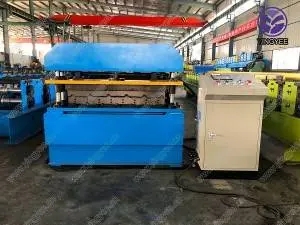
The Mechanism of Thread Rolling Machines
Thread rolling machines are essential tools in the manufacturing industry, particularly in the production of screws, bolts, and various fasteners. These machines utilize a unique process called rolling to form threads on a workpiece, which is often referred to as a blank. The key advantage of thread rolling over traditional cutting methods is that it produces stronger threads with improved surface integrity and tighter tolerances.
At the heart of a thread rolling machine is its design and mechanism. Typically, the machine consists of two or more dies that are precisely shaped to compress the blank material into the desired thread form. As the blank is rotated, the dies apply a high amount of pressure, causing the material to flow and form the threads without removing any material. This method not only preserves the integrity of the original material but also enhances its tensile strength.
There are two main types of thread rolling processes flat rolling and cylindrical rolling. Flat rolling involves using two flat dies to impart thread shapes onto a flat blank, which is then cut to length. In contrast, cylindrical rolling uses cylindrical dies that can form threads on round bars. Both methods have their advantages and are chosen based on the specific requirements of the product being manufactured.

One of the significant benefits of using thread rolling machines is their efficiency. The rolling process is typically faster than traditional cutting methods, allowing manufacturers to produce large quantities of threaded components in a shorter period. Additionally, because no chips are produced during the rolling process, there is less waste, making it a more environmentally friendly option.
In terms of applications, thread rolling machines are widely used in various industries, including automotive, aerospace, and construction. They are instrumental in producing high-strength fasteners that are critical for the integrity of machinery and structures. Moreover, thread rolling can be modified to create specialized threads, including left-handed threads or custom pitches, catering to specific engineering needs.
As technology advances, thread rolling machines continue to evolve. Modern machines may incorporate CNC (Computer Numerical Control) systems, enabling precise control over the rolling process, which enhances quality and consistency. Automation in thread rolling not only improves productivity but also minimizes human error, contributing to higher quality outputs.
In conclusion, thread rolling machines play a crucial role in manufacturing threaded components. Their efficient and effective process leads to high-quality products that meet the stringent demands of various industries. As innovation continues to shape the industry, the future of thread rolling machinery looks promising, fostering advancements in both production capabilities and engineering applications.